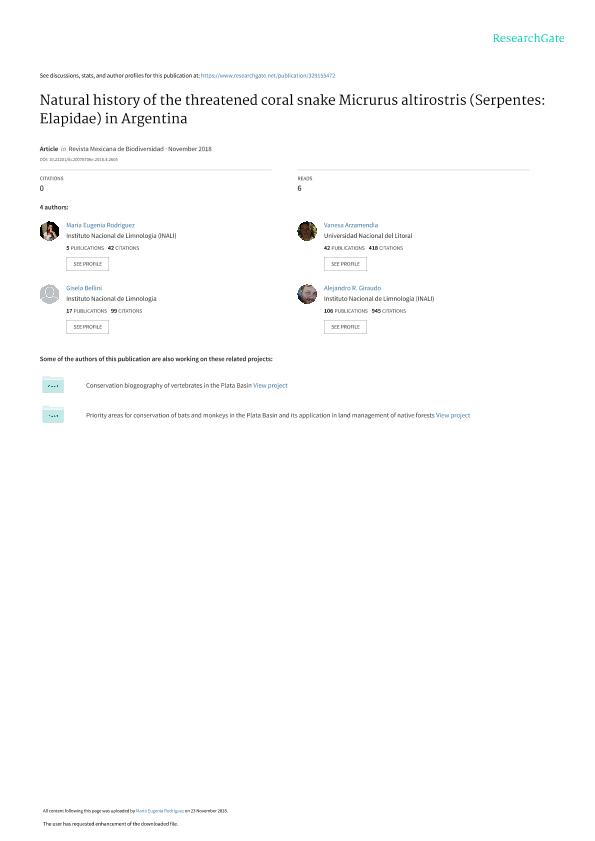Artículo
Natural history of the threatened coral snake Micrurus altirostris (Serpentes, Elapidae) in Argentina
Fecha de publicación:
12/2018
Editorial:
Universidad Nacional Autónoma de México. Instituto de Biología
Revista:
Revista Mexicana de Biodiversidad
ISSN:
1870-3453
Idioma:
Inglés
Tipo de recurso:
Artículo publicado
Clasificación temática:
Resumen
The genus Micrurus comprises nearly 80 endemic species in the American continent. Knowledge on its natural history is based on populations from Brazil and Uruguay, making it necessary to intensify ecological research in Argentina. We present data on morphology, diet, and reproduction for a threatened Argentine population of M. altirostris from the Atlantic Forest biodiversity hotspot. Ecological data were obtained from collected specimens and scientific collections. Females attained sexual maturity at a longer body size than males, but the latter reached a larger size, which is related to male-male combat, a behavior reported in this study. We report a female with 3 oviductal eggs, and 2 ovipositions of 4 and 6 eggs in the late spring-early summer period. Males seemed to have a seasonal reproductive cycle. The diet of M. altirostris was based on elongated reptilians and was mostly similar to the diet of populations from Brazil and Uruguay. We reported 4 new prey types for M. altirostris and confirm the consumption of reptile eggs for the genus Micrurus. Our results contribute to a better understanding of the natural history of M. altirostris, providing valuable information for designing strategic conservation plans.
Palabras clave:
ARGENTINA
,
DIET
,
MICRURUS ALTIROSTRIS
,
MORPHOLOGY
,
NATURAL HISTORY
,
REPRODUCTION
Archivos asociados
Licencia
Identificadores
Colecciones
Articulos(INALI)
Articulos de INST.NAC.DE LIMNOLOGIA (I)
Articulos de INST.NAC.DE LIMNOLOGIA (I)
Citación
Rodríguez, María Eugenia; Arzamendia, Vanesa; Bellini, Gisela Paola; Giraudo, Alejandro Raul; Natural history of the threatened coral snake Micrurus altirostris (Serpentes, Elapidae) in Argentina; Universidad Nacional Autónoma de México. Instituto de Biología; Revista Mexicana de Biodiversidad; 89; 4; 12-2018; 1255-1262
Compartir
Altmétricas




